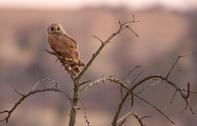Rietvlei Nature Reserve
Tshwane seems to brim with trail running routes within the proverbial stone’s throw from the CBD, and Rietvlei Nature Reserve is one such destination. Situated 38 km from OR Tambo International Airport and 18 km from the Tshwane city centre, this 3 800 ha reserve incorporates a mix of both grassland and undulating hills

. Spectacular views, an antediluvian lava stream and the Rietvlei Dam (fed by Sesmyl – or Six Mile, if you insist – Spruit combine to create an outdoor arena with massive appeal to trail runners keen to escape the surrounding urban jungle.
Trails at Rietvlei Nature Reserve combine a network of jeep tracks and easy single-track meandering within the surrounding kopjes. The signage are generally good, differentiating between the two main routes. Moderate terrain makes this the perfect spot for rookie runners to explore, with basic facilities that include ablution and running water. There is abundant birdlife that calls the reserve home, including marsh owl, southern balck korhaan and common snipe. Be on the lookout for them as you complete the trails.
Rietvlei Nature Reserve is a high risk area during typical Highveld thunderstorm activity, so avoid any threatening conditions. Trail runners should also be on the lookout for snakes, ticks and MTB riders on the trails. Take the time to plan your route and inform others of your itinerary.
Westgat Diving
Just east of Tshwane lies a dolomite cave which only a handful of technical divers have dived – with the only clue being a small crack in the ground it would never lead you to think that there is a cave to dive. It is a technical diving venue which does not have any access to daylight while you are diving. Wetsgat is on a private property and is not open to the public.
Getting down with your equipment is a tricky task – you need to slide down a steep 15 m gravel slope to the small rocky entrance to the cave. Once the equipment is at the entrance of the cave, divers can enter through the small rock opening and climb down some slippery boulders. Here the equipment can be stacked inside the entrance of the cave and from there it can be carried further down the dark cave until you get to the water. The cave is very hot with high humidity and absolutely no natural light. In the darkness, you kit up and then start your dive. The chamber is quite large – 40 m by 40 m – and the roof's distance from the floor or water surface ranges between 1 m and 15 m. Water covers 80% of the chamber, leaving only 20% dry cave floor for you to kit up on.
A gentle slope leads to the opposite side of the chamber where a borehole pipe enters the cave roof and goes down into the water. The water is like crystal, but walking from the rocky cave floor on to a muddy bottom will cause silt to drift up. The borehole pipe is the reference point from where the reel line is attached.
From the main chamber, the cave goes down in a south-eastern direction. You swim past some big boulders at 12 m, and at about 30 m from the borehole pipe you enter the next chamber and follow a steady decline. The bottom is very rocky with lots of silt – buoyancy is vital to keep your fins well off the bottom. The roof is not very stable and you may experience some falling rocks due to the bubbles loosening the roof. The second chamber is about 40 m by
20 m and slopes down to about 38 m. From this chamber you change direction, moving slightly into a more easterly direction. The cave floor now slopes down much steeper and it is best to do regular tie-offs. The third and last chamber is smaller with the roof coming down and meeting the floor at the end of the cave at a depth of 48 m. At this point, you are 150 m from the borehole pipe.